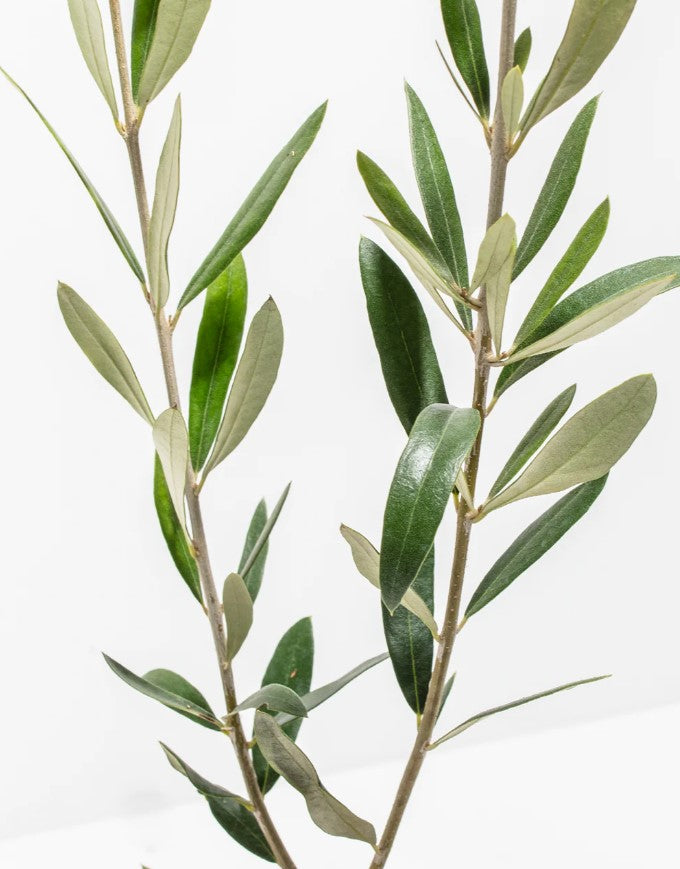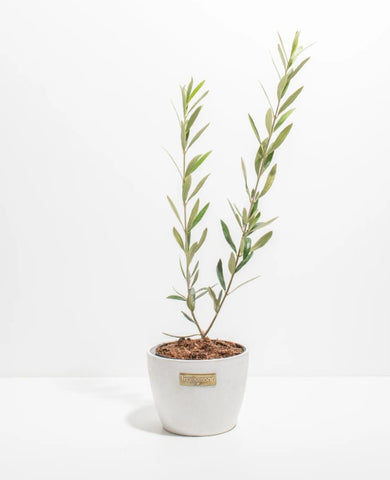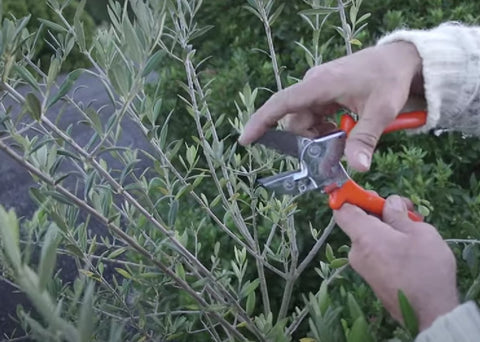Gift Card Balance
Enter the code below to redeem your gift card

A potted olive tree brings life to any space with its symbolic meaning, slender, silver-green leaves and twisting branches that bear delicious fruits. And like every other plant, this subtropical tree requires regular pruning to enhance its health, aesthetic appeal, and encourage new growth. Successful fruit production also depends on applying the correct pruning techniques.
So, if you’re wondering how to prune an indoor olive tree, you’ve come to the right place. Continue reading to learn the A to Z of indoor olive tree pruning. Also, find out what the best time of the year is to complete the task and learn some key post-pruning care tips to minimize any stress-related issues with your beloved plant.

It’s a good practice to trim your indoor olive tree for many reasons. Removing dead or diseased branches, for instance is vital for your tree’s overall health and aesthetic appearance. When you trim its suckers and branches growing inward, this promotes better air circulation and allows more light to penetrate.
Pruning also maintains the tree’s shape and size, and prevents overcrowding, which can lead to disease or pest issues. Additionally, regular trimming can enhance fruiting and new growth.
Your olive tree may need pruning if it starts showing the following signs:
So, if you notice any of these issues with your potted olive tree, trimming the problematic branches will improve its look and overall health.
The best time to prune olive trees is late spring or early summer, ideally before new fruits emerge. This also happens to be their inactive period, allowing sufficient time for optimal healing and minimal stress. Pruning in late spring or early summer also means that you’ll avoid extreme temperatures, heat waves or frost.
You’ll require the following tools and supplies to prune an olive tree:
Important: Clean and sterilize your pruning shears to prevent the potential spread of disease through cuts. You can use ethanol or isopropyl alcohol and a cloth to wipe your pruning tools with and eliminate any potential disease-causing pathogens.

Once you’ve gathered the above tools and supplies, follow these steps to prune a potted olive tree in the right manner:
The first step involves inspecting the olive tree for any dead, diseased, or damaged shoots and branches. Identifying the areas that need attention is important to enhance the tree’s structure.
Using your sharp, sterilized pruning shears, cut shoots less than ¾-inch and branches 1 to 3-inch in diameter. To address crowdedness, aim to remove any inward-or downward-growing branches. This will facilitate better light penetration and and improve air circulation.
Next comes the top part of the central stem or excessively tall branches, which should be pruned to encourage new growth and achieve a better shape. This will also help the overall olive tree canopy appear balanced.
Give the tree the ideal shape of a vase or martini glass. Leave 3-4 strong lateral branches (at least ¾ inches thick and growing out and upward from the trunk), and cut the remaining ones. This way, the olive tree will appear wider at the top and narrow at the base, just like a vase.
Tip: You can also prune your olive tree into a globe, or bush-like shape.
Re-access the olive tree to see if it needs more trimming for a more balanced look. If yes, make the final adjustments.
Although optional, we highly recommend applying a wound dressing to the fresh cuts to protect them from pests or diseases.
Ensure to apply the right care for your indoor olive tree, post pruning, with the following expert tips:
A: Pruning your olive tree towards the end of its dormant period is the key to making it bushier. This encourages the tree to grow new shoots and in turn, create a lovely bushy olive tree.
A: You can trim the top of your olive tree, to first, control its height and second, promote lateral growth. Moreover, trimming the crown will allow more air and light to penetrate through the tree.
A: If you cut down an outdoor olive tree, planted in the garden, it can still sprout new shoots in the spring, provided it has a healthy toot system.
A: It’s best to go gentle when you prune your olive tree, as hard pruning can lead to too many vertical shoots and unbalanced shape. The best practice is to avoid cutting more than 3-4 shoots and branches from your tree, especially if it’s younger than 4 years old.
A: The ideal shape for any indoor olive tree is that of a wine glass, with 3 to 4 main branches growing from the main trunk.
Indoor olive trees are low-maintenance plants that usually require pruning once a year. This task is typically done in spring or early summer once your olive tree begins to open its flower buds. Pruning frees your olive tree from dead, diseased, and damaged branches, improves sunlight exposure and air circulation. Trimming your tree into the right shape also makes it more aesthetically appealing. Last but not least, it leads to more vigorous growth, potentially increasing fruit production.
Pairing the right companion plants with your olive tree can further enhance the aesthetics of your indoor greenery. Unsure which indoor plants to choose? Consider bringing home the decorative dwarf olive tree, some aromatic herbs, or flowering plants like jasmine, oleander (which has similar foliage like the olive tree), or eucalyptus for a thriving indoor garden.